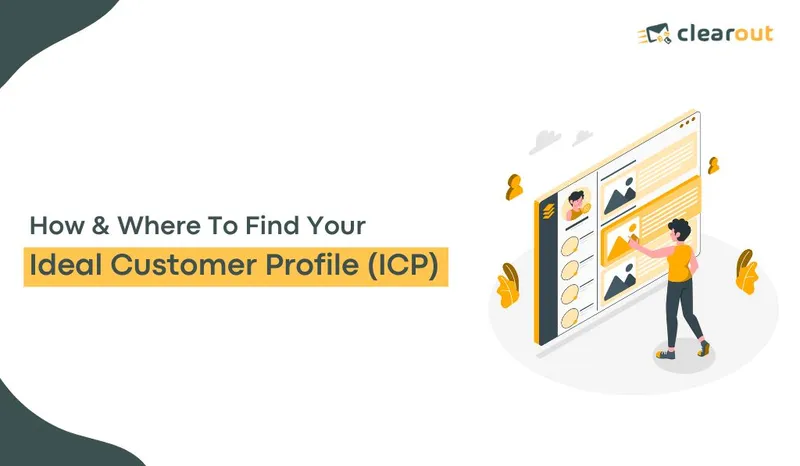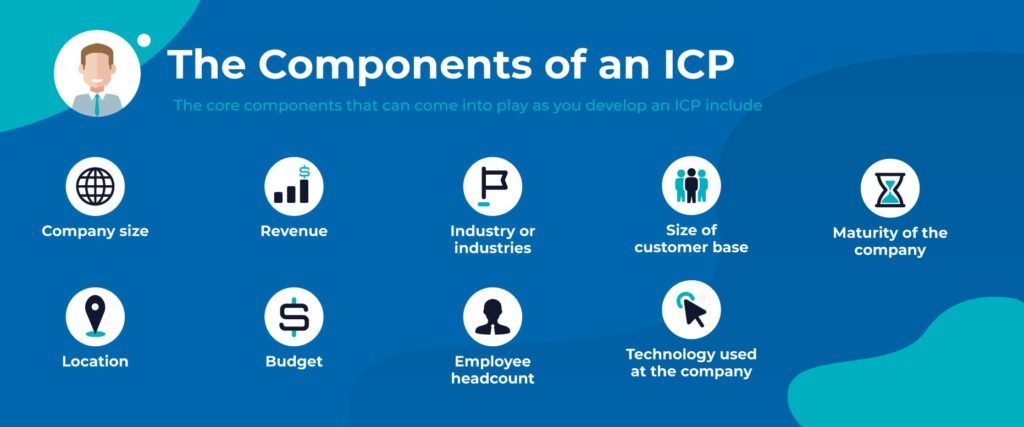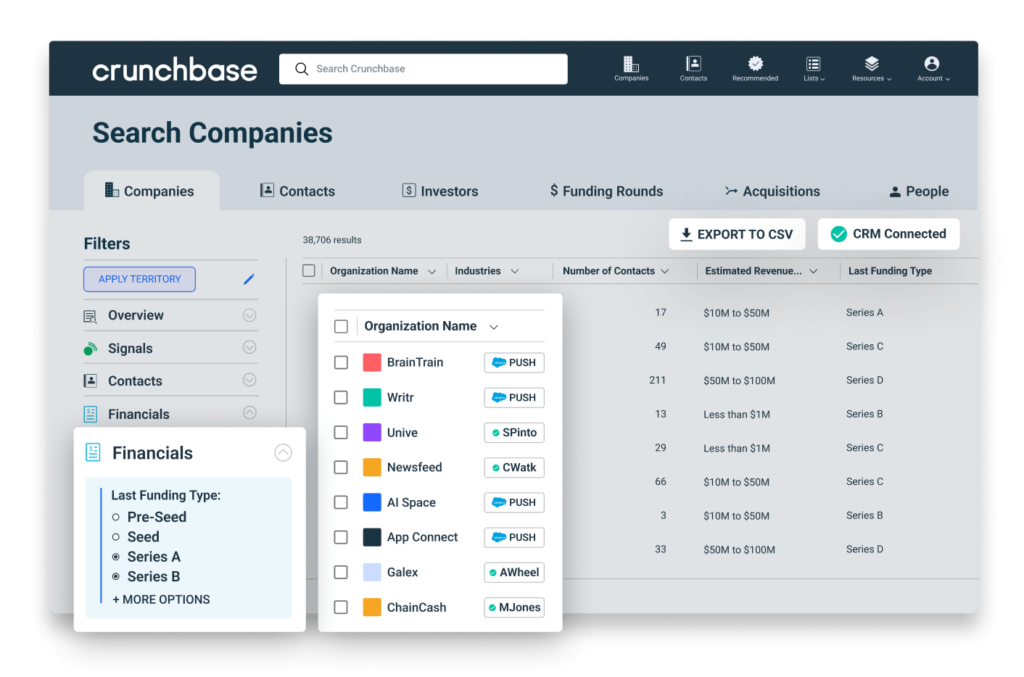- Products
- Email Verifier Verify emails addresses individually, in bulk or through API, with 99% accuracy
- Email Finder Find individual or bulk emails by entering the person & company name or domain
-
Form Guard Protect your forms from spam, bots, and invalid submissions with real-time email, phone, and name verification.
- Prospect SQL/MQL list building with high levels of personalization, real-time data enrichment and prospect search
- Clearout For SheetsVerify email addresses directly on Google Sheets with Clearout for sheets add-on
- ClearoutPhoneValidate phone numbers across 240+ countries in bulk, quick or real time validation Free Tools
- Disposable Email Checker
- Reverse LinkedIn Profile Lookup Tool
- Reverse Email Lookup Tool
- Email List Cleaner
- ResourceDEVELOPER
API
Clearout APIs are structured around REST and JSONWebhooks
Capture real-time events in your application workflowForm Guard
Real-time form validation to keep bad contacts out of your CRMKNOWLEDGE BASEGetting started
Sending campaigns without bounces is made simpleFAQ
Easily find answers to services, security and common questionsUSE CASESLead Generation
Learn how professionals generate quality leadsGUIDESPricingTransparent & flexible pricing to support pay-per-use or recurringEmail Verifier - Comparison
AI-powered email verification with 99%+ accuracy, real-time validation, and transparent risk scoringEmail Finder - Comparison
Pre-verified B2B email addresses with confidence scoring, find real person email, not role-based addressBLOGSEmail Verification ToolsHow To Build a Strong Sales Pipeline?View All Blogs
- Pricing
- Integrations
- Enterprise
- Login
How & Where To Find the Ideal Customer Profile that converts

Suppose your product is a lead qualification tool that automatically qualifies leads.
Now imagine promoting it to small businesses with fast, simple buying decisions—when it’s actually built for enterprises with long, complex sales cycles. Chances are, you won’t see any conversions. Why? Because you’re speaking to the wrong audience.
Targeting the wrong audience doesn’t just miss the mark—it costs you. A 2025 study found that companies using proper audience segmentation saw a 760% increase in email revenue, with 77% of their ROI coming directly from targeted marketing efforts. That’s how much is at stake.
Now imagine promoting it to small businesses with fast, simple buying decisions—when it’s actually built for enterprises with long, complex sales cycles. Chances are, you won’t see any conversions. Why? Because you’re speaking to the wrong audience.
Targeting the wrong audience doesn’t just miss the mark—it costs you. A 2025 study found that companies using proper audience segmentation saw a 760% increase in email revenue, with 77% of their ROI coming directly from targeted marketing efforts. That’s how much is at stake.

Even worse, research shows that 50% of users drop off when they’re not the right fit for your messaging or offer. So before diving into any sales strategy, ask yourself the million-dollar question:
“Who exactly are we trying to sell the product to?”
So whether you are at the starter stage in sales or the super expert outreach, just getting your Ideal Customer Profile (ICP) right is your most crucial move. Because without it, you're shooting arrows in the dark. With it, every voice message, every campaign, and every conversation suddenly becomes more pinpointed—and more successful.
In this guide, we’ll walk you through exactly how to define and find your ICP, so your efforts reach the people who will truly benefit from what you’re offering.
Let’s dive in.
“Who exactly are we trying to sell the product to?”
So whether you are at the starter stage in sales or the super expert outreach, just getting your Ideal Customer Profile (ICP) right is your most crucial move. Because without it, you're shooting arrows in the dark. With it, every voice message, every campaign, and every conversation suddenly becomes more pinpointed—and more successful.
In this guide, we’ll walk you through exactly how to define and find your ICP, so your efforts reach the people who will truly benefit from what you’re offering.
Let’s dive in.
Table of Contents:
What is an Ideal Customer Profile (ICP)?
An Ideal Customer Profile is the description of the perfect customer or company that would derive the maximum benefits from your product. It is a template that companies create to identify the buyers who are a perfect fit for what the company sells. Here are the key elements included in an ICP.
- Firmographics include characteristics like industry, company size, revenue, business model, location, etc.
- Technographics include the details of the technology stack used by the company - marketing tools, data analytics tools, CRM, etc.
- Psychographics include company challenges or customer pain points.
For example, if you're a B2B SaaS company, your ICP might be an early-stage startup in the Fintech industry with a revenue of $5 million in the APAC region and using payment or invoicing software.

Ideal Customer Profile vs Buyer Persona - Is there a difference?
Though ICPs and buyer personas are often used interchangeably, the two have a few key differences.
| Ideal Customer Profile | Buyer Persona |
|---|---|
| A strategic framework for a high-level overview | A strategic tool that captures behavior, preferences, and specific traits to create a fictional representation of a customer segment |
| Gives a broad, detailed view | Deep dives into individual customer profiles focusing on granularity |
| Helps identify target market segments and align marketing efforts accordingly | Offers specific insights into customer profiles for personalization |
| Generally associated with B2B businesses | Used by both B2B and B2C companies |
| Created based on data from CRM, analytics tools, customer interviews | Focuses on the individual behaviors, patterns, and preferences behind a purchase. |
Why Create an Ideal Customer Profile?
Tracy Eiler, CMO at InsideView, says, ‘An important part of our strategy was building our ideal customer profile (ICP). These aren’t always the accounts you can sign the fastest—they’re the accounts most likely to stay with you the longest.’
There are several reasons why companies must create ICPs. Here are a few of them.
Focused and Personalized Marketing Efforts
Research by McKinsey’s indicates that personalization increases revenue by 40% for high-growth companies.
With ICPS, organizations can better understand their target markets' actions, traits, or characteristics as well as build more personalized and targeted marketing campaigns.
With ICPS, organizations can better understand their target markets' actions, traits, or characteristics as well as build more personalized and targeted marketing campaigns.
Increased Conversion Rates
High-quality ICPs provide the key points for sales pitches.
ICPs also help you rank new prospects based on their potential revenue for the company. As a result, you can focus on high-value leads and boost conversion rates.
ICPs also help you rank new prospects based on their potential revenue for the company. As a result, you can focus on high-value leads and boost conversion rates.
Improved Product or Service
ICPs help product and service teams to build and improve on the company product or solution to meet customers’ needs and expectations better.
They can take into account customer feedback about what’s working and what’s not to create products that retain customers.
They can take into account customer feedback about what’s working and what’s not to create products that retain customers.
Increased Customer Lifetime Value (CLTV)
ICPs help target the right target audience by detailing their pain points, interests, and challenges.
Knowing your audiences well can help you implement dedicated marketing strategies and help them solve their problems with your product, thereby boosting sales wins, average deal size, and CLTV.
Knowing your audiences well can help you implement dedicated marketing strategies and help them solve their problems with your product, thereby boosting sales wins, average deal size, and CLTV.
📌 Here’s how New Breed successfully defined and implemented its ICP, Startup Sam, to increase its revenue significantly.
New Breed defined one of its ICPs as Startup Sam. This customer type has the following attributes:
With high acquisition costs, this ICP provided little value to the company.
Rethinking strategies, New Breed deterred sales reps from working with Startup Sams and offered the ICP other resources to overcome their challenges.
As a result, New Breed witnessed the following:
Amazing, right?
New Breed defined one of its ICPs as Startup Sam. This customer type has the following attributes:
- Highly interested in collaborating with New Breed
- Limited budget
With high acquisition costs, this ICP provided little value to the company.
Rethinking strategies, New Breed deterred sales reps from working with Startup Sams and offered the ICP other resources to overcome their challenges.
As a result, New Breed witnessed the following:
- 2016 - New Breed started selling to Startup Sams
- 2017: An 87% increase in average deal size.
- 2018: A further 30% growth from the previous year.
- 2019: A 152% increase compared to 2016.
- 2020: Achieved a three-year revenue growth of 148%, earning a spot on the Inc. 5000 list of fastest-growing companies.
Amazing, right?
How to Create An Ideal Customer Profile?
According to Josh McDonald, Founder at Slate Pointers and a GTM expert, says, ‘Your ICP is not just a resource for the marketing team; it’s actually a strategic tool integral to aligning your entire go-to-market (GTM) strategy.’
Data-driven ICPs are reliable and accurate. They help you segment the customer base more effectively and spot emerging trends and patterns.
Also, ICPs based on data help you focus your efforts on the most promising prospects, improving efficiency and reducing acquisition costs. So, consider the following when creating your ICP:
Data Collection
Develop your ICP by collecting and analyzing quantitative and qualitative market data. Gather qualitative inputs from stakeholder interviews and leverage them to create your ICP.
Data Analysis
Analyze historical prospect and customer data to research common attributes of the most valuable accounts.
According to a Reddit thread, gather data from your CRM like revenue, location, team size, etc., and analyze accounts and their buying committee structure by conducting in-depth interviews.
This data collection and analysis will help you identify the decision-makers of a company and the behavioral and firmographic attributes that show up for high-value customers.
According to a Reddit thread, gather data from your CRM like revenue, location, team size, etc., and analyze accounts and their buying committee structure by conducting in-depth interviews.
This data collection and analysis will help you identify the decision-makers of a company and the behavioral and firmographic attributes that show up for high-value customers.
Cross-functional Collaboration
According to Pankaj Prasoon, a Product Management Expert at Microsoft, 'effective cross-functional collaboration is crucial for product success as it ensures diverse perspectives, shared goals and streamlined communication, leading to higher innovation and customer satisfaction.'
Consider cross-functional collaboration to develop your ICP. Hold meetings with sales, marketing, and customer success teams during ICP development to ensure that it aligns with all departments and organizational goals, leading to better strategies, conversion rates, and a higher ROI.
Third-party Tools
Use tools and templates for ICP development to ensure consistency across teams. HubSpot’s ICP template and GrowthHacker’s ICP Canvas are useful tools that allow you to map out your ICP easily.
Additionally, here are three tools to help you tap into rich customer information.
Additionally, here are three tools to help you tap into rich customer information.
- SparkToro: This is an audience intelligence tool that offers market insights like the social channels your audience prefers, how they spend their time, the communities they participate in, etc.
- Gong: This tool analyzes customer interactions via email, phone, web conferences, etc., to highlight factors that contributed to conversions in the past.
- Clearout: A data enrichment platform that helps you prospect potential ICPs and high-intent leads through LinkedIn, and get their valid contact details.
When you’re equipped with the data you need, create your ideal customer profile by following these steps.
1. List the Best Customers
Identify your best customers and identify the characteristics common to them.
Define your ‘best’ considering your company goals. For example, you might compare CLTV or how long the customers take to convert —or any other metric. Once you have the list ready, continue with the next step.
Define your ‘best’ considering your company goals. For example, you might compare CLTV or how long the customers take to convert —or any other metric. Once you have the list ready, continue with the next step.
2. Jot Down the Common Attributes
Research the customer data to find out why they’re the best customers —is it their fast growth or their location, industry, or company size?
Besides, identify what factors contribute to their satisfaction, how they found your product, their shared characteristics, the marketing tactics they use the most, their purchase motivations, pain points, and use cases.
Besides, identify what factors contribute to their satisfaction, how they found your product, their shared characteristics, the marketing tactics they use the most, their purchase motivations, pain points, and use cases.
3. Identify Opportunities and Challenges
Find the challenges your ICP faces and the opportunities where you can help them solve their issues.
For instance, your product helps qualify leads, and one of your ICPs is a sales manager. Sales managers own the sales process and work alongside marketing teams to achieve sales targets and improve the sales process.
They might use your product to qualify leads faster. You can use this product information to help sales managers address the challenges they face in qualifying leads.
For instance, your product helps qualify leads, and one of your ICPs is a sales manager. Sales managers own the sales process and work alongside marketing teams to achieve sales targets and improve the sales process.
They might use your product to qualify leads faster. You can use this product information to help sales managers address the challenges they face in qualifying leads.
4. Draft your Ideal Customer Profile
You’ve gathered and analyzed the data, done the work, and now you have a good idea of your best customers and how to identify them.
This step involves creating a document that clearly outlines your ICP. Include important information like business characteristics, individual characteristics, and behavioral insights of your perfect customers.
This step involves creating a document that clearly outlines your ICP. Include important information like business characteristics, individual characteristics, and behavioral insights of your perfect customers.
5. Test and Refine
Review and update your ICP every three months based on changing customer behavior.
Check your site’s traffic source, the target audiences visiting your website, reviews, and comments from customers on platforms like G2 and ProductHunt to find out the changing market trends and update your ICP as required.
Check your site’s traffic source, the target audiences visiting your website, reviews, and comments from customers on platforms like G2 and ProductHunt to find out the changing market trends and update your ICP as required.
How & Where to Find Your ICPs?
Now that you know your ideal customer, let’s talk about where & how you can find them. Here are the online and offline platforms where you can find your ICPs.
Online Platforms
1. LinkedIn
LinkedIn’s advanced search filters (people filter) let you connect with LinkedIn members based on their profile information. You can create custom audiences using the Matched Audience option. Further, you can use LinkedIn’s Clearout extension to find the contact details of your ICPs.
You can create custom audiences using the Matched Audiences feature. With Clearout’s LinkedIn extension, you can instantly extract pre-verified contact details of your ICPs directly from LinkedIn, Sales Navigator, and search results.
You can create custom audiences using the Matched Audiences feature. With Clearout’s LinkedIn extension, you can instantly extract pre-verified contact details of your ICPs directly from LinkedIn, Sales Navigator, and search results.

2. Crunchbase
Cruchbase’s filtering options allow users to identify potential customers based on industry, company size, funding, location, and other criteria.

3. Industry Platforms
Industry-focused platforms and communities like HS's Inbound, Slack communities like SaaSBoomi, S11S, SaaS Club, Salesforce's Trailblazer Community, etc., can help you reach out to your ideal customer profiles and engage with them.
4. Social Media Groups
While LinkedIn is a good social platform for B2B companies, Facebook and Instagram work well for companies targeting consumers. Here are a few strategies to find and engage your ICP on social platforms.
- Share posts, videos, and valuable insights targeting you’re your audience to highlight your value proposition.
- Engage with industry experts and influencers – ask questions, post comments, or like posts to get on their radar.
- Promote product-led content that adds value to your targeted audience’s lives.
Offline Channels
5. Industry Events
Go to industry events, summits, and conferences to meet potential customers and find out what bugs them. For example, SaaStr Annual and WebSummit happen every year. These events give SaaS companies a chance to network with experts and find new customers.
6. Partnerships
Partnering or collaborating with other companies in your field or social media influencers to reach more potential customers. This also helps you learn what your customers need and what features they like best.
A fantastic example is mobile network provider EE, which gives new users six months of free Apple Music.
A fantastic example is mobile network provider EE, which gives new users six months of free Apple Music.

A Final Note - Pro Tips for Finding Your ICPs
An ICP is not just a document for your orientation to show what your customers look like, but it is an important tool to guide your strategic decisions.
While documenting the perfect customer profile through market research is critical, there are a few tips you must consider to implement your ICP successfully.
Start with being specific about the unique and important characteristics of your ICP. Test your initial ICP from time to time to upgrade it with the evolving market needs.
Track your progress to ensure your ICP implementation is working out well. Higher win rates, High LTV, High NPS score, boost in conversion rate, and happy customer feedback are signs you’re doing great.
While documenting the perfect customer profile through market research is critical, there are a few tips you must consider to implement your ICP successfully.
Start with being specific about the unique and important characteristics of your ICP. Test your initial ICP from time to time to upgrade it with the evolving market needs.
Track your progress to ensure your ICP implementation is working out well. Higher win rates, High LTV, High NPS score, boost in conversion rate, and happy customer feedback are signs you’re doing great.
FAQs
1. Who is your ideal customer? Example, please.
For instance, if you are in the B2B SaaS business providing invoicing software, an ideal customer would be an immature fintech start-up operating within the APAC region, ranking revenues of at least $5 million, and still using something such as Xero or QuickBooks.
2. What tools can help me verify if the leads fit my ICP?
Tools like Clearout help validate contact details and enrich lead data in real-time. Other tools include Gong for interaction insights, SparkToro for audience behavior, and HubSpot for CRM-based segmentation and scoring.
3. What are the signs of a poorly defined Ideal Customer Profile?
- Low conversion rates
- Poor retention
- High customer acquisition cost (CAC)
- Misaligned marketing messaging
- Sales teams chasing unqualified leads
These are all indicators that your ICP may need refinement.
4. How do I validate if my Ideal Customer Profile is working?
Track performance metrics such as:
- Conversion rates from lead to customer
- Average deal size
- Customer retention and lifetime value (CLTV)
- Win rate against ICP-matched leads vs. non-ICP leads
If these improve, your ICP is likely working.
5. What are the 4 types of customer profiling?
The four common types of customer profiling include:
- Demographic Profiling – Age, gender, income, etc.
- Psychographic Profiling – Values, interests, lifestyle
- Behavioral Profiling – Buying patterns, engagement levels
- Firmographic Profiling – Industry, company size, location (for B2B)
6. Why is it important to create an ICP?
An ICP helps you target the right audience, personalize your messaging, improve sales efficiency, increase conversion rates, and retain high-value customers. It aligns your sales, marketing, and product strategies for better ROI.
7. What are the components of a strong ICP?
A solid ICP typically includes:
- Firmographics (industry, size, revenue, location).
- Technographics (tools used)
- Pain points or challenges
- Buying behavior and decision-making process
8. How often should I update my Ideal Customer Profile?
Ideally, your ICP cleanses after every 3-6 months especially when there are changes in the target market, changes in your product offering, or an alteration in customer behaviors.
9. Can I target more than one ICP?
That’s completely fine. Many companies segment their market and define multiple ICPs based on different product lines, industries, or customer tiers. Just ensure each has its own data-backed profile.
10. Can Clearout help me find my ICPs?
Yes! Clearout’s LinkedIn extension helps you extract verified contact data of high-intent leads. Its in-app prospecting tools and data enrichment features make it easier to identify and engage with your ICPs across channels.
Recent Posts
27 Nov 2025
Clearout Recognized In Forbes India DGEMS Select 200 | 2025
Clearout featured in Forbes India DGEMS Select 200 (2025 Cohort) for its innovative & scalable solut ...
21 Nov 2025
9 Hidden Bot Patterns Behind Modern Form Attacks
Wondering how bots still slip through your forms? Explore 9 hidden bot patterns behind modern form a ...
19 Nov 2025
10 Proven CRM Migration Best Practices for 2026
Explore the best practices of CRM migration in 2026 and learn how to audit data, map fields, cleanse ...
19 Nov 2025
How Syntax, Domain, and SMTP Email Validation Checks Work
Explore how syntax, domain, and SMTP email validation checks work and how they help identify formatt ...
18 Nov 2025
How to Find Business Email Addresses the Legal & Ethical Way
Learn legal and ethical considerations when finding business email addresses. Stay GDPR-compliant, a ...
Clearout's
Form Guard
Validate email, phone & name on any forms!
- Real signups only
- Verified emails
- Valid phone numbers
- No fake names
- Cleaner CRM
- No devs needed
Email Verification, Email Finding Form Guard & Prospecting Service
Expand Your Reach By Finding & Verifying Ideal Prospects.

